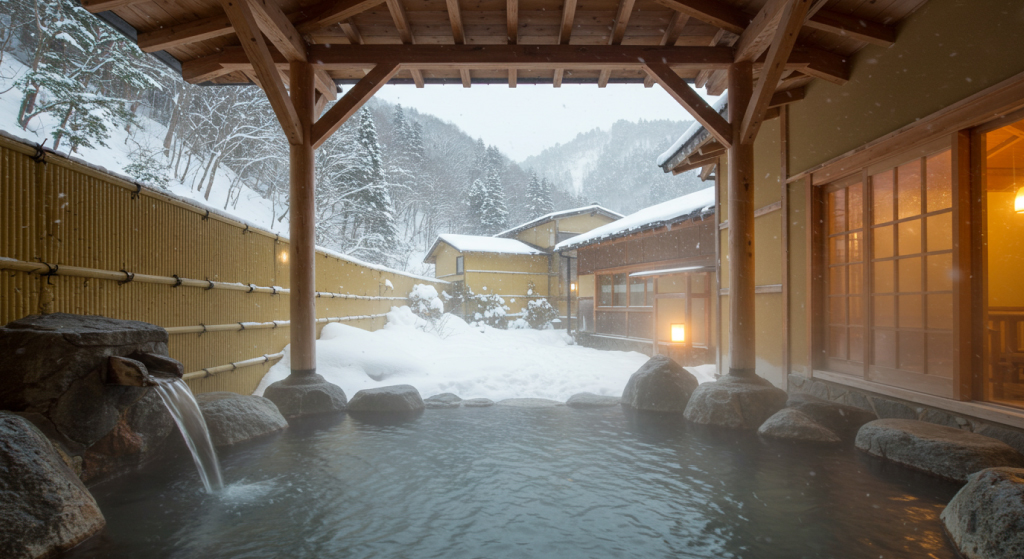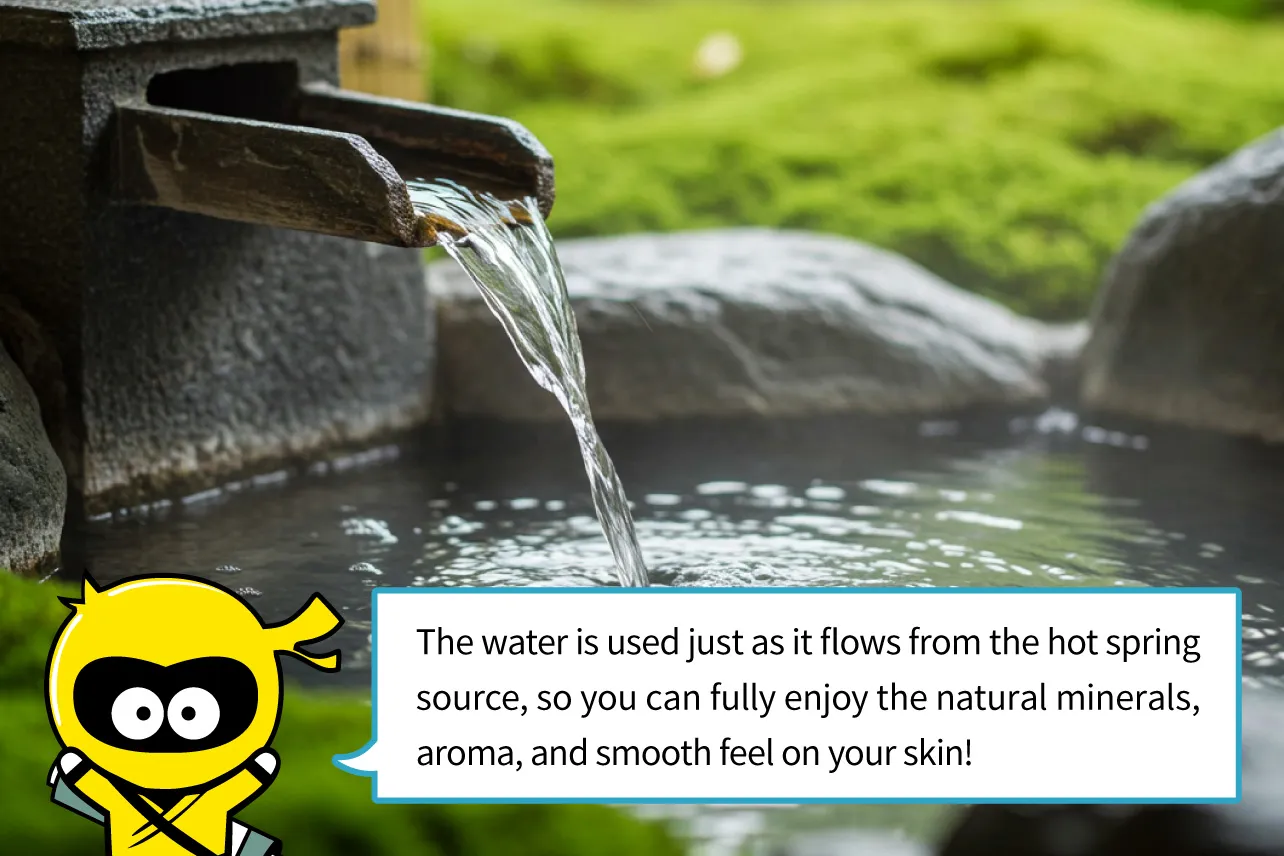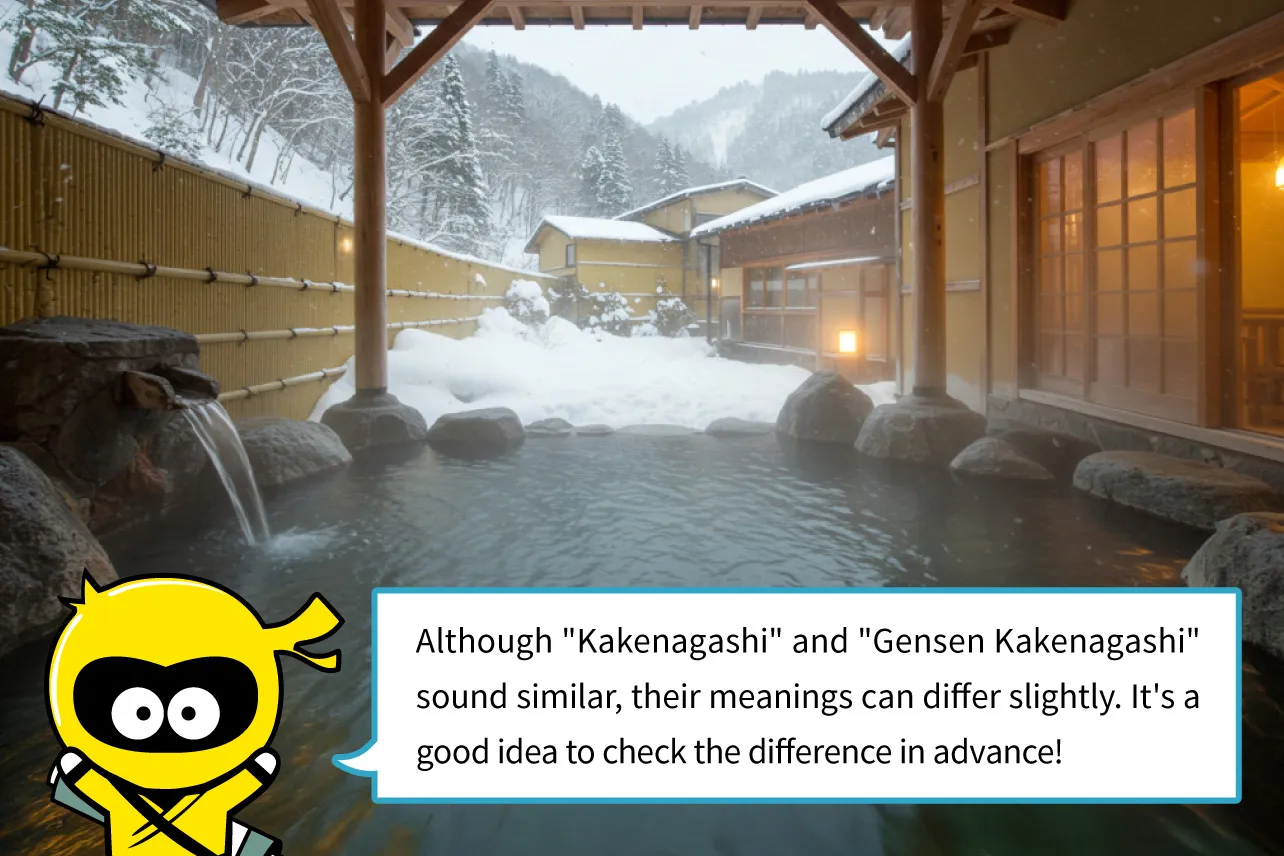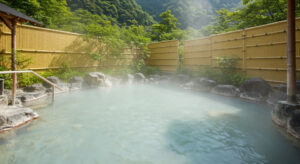

What Is a Kakenagashi Onsen? A Simple Guide for First-Timers
A “kakenagashi onsen” is a hot spring that uses naturally sourced water flowing directly into the bath without any recycling or reuse. Since the water is constantly refreshed, it’s clean, fresh, and full of natural minerals. In Japan, preserving the blessings of nature is deeply rooted in culture, and kakenagashi represents that philosophy. If you’re a first-time traveler to Japan, the term may seem unfamiliar, but it’s a key word when seeking a genuine onsen experience. Knowing this before your trip can help you choose the right accommodation.
Kakenagashi vs Recirculated Onsen: Pros and Cons Explained
A recirculated onsen reuses water by filtering and treating it with chlorine, which helps conserve water and energy. However, this can reduce the freshness of the spring water. In contrast, kakenagashi offers constantly flowing, untreated water, providing a more natural experience. While it’s more water-intensive and harder to maintain, the quality is often worth it. Some foreign visitors may have concerns about hygiene, but both types have their merits. Always check if the facility uses “kakenagashi” or “recirculated” systems before booking.
Is Gensen Kakenagashi the Real Thing? Understanding the Definition


The term “gensen kakenagashi” holds special value among hot spring fans. It means that the water flows directly from the natural source into the bath without being heated, diluted, filtered, or reused. However, definitions may vary between facilities in Japan. Even when “gensen kakenagashi” is advertised, some minimal treatment may still occur. To ensure an authentic experience, check the facility’s details, such as water temperature and whether any water is added or heated, on the inn’s official site or booking page.
Why Are Kakenagashi Onsens So Popular? Reasons Travelers Love Them
Kakenagashi onsens are loved for their freshness and purity. Since fresh spring water is always flowing, it’s clearer, has a natural scent, and retains its mineral benefits. These baths are said to enhance relaxation, improve skin, and reduce stress. For foreign visitors interested in traditional Japanese culture, kakenagashi represents an authentic onsen experience. They’re often featured in guidebooks and travel videos, and more travelers are choosing onsen as a highlight of their trip to Japan. It’s a perfect way to connect with Japan’s nature and traditions.
Don’t Be Misled: Understanding the “Kakenagashi” Label


Even if an onsen is labeled as “kakenagashi,” it may still use added water or heat. Since Japan doesn’t have strict industry-wide labeling standards, meanings can vary from place to place. This can be confusing for international travelers who expect 100% pure flow. To avoid misunderstandings, check the “onsen analysis chart” or detailed facility descriptions before booking. Trustworthy inns or tourist sites usually provide clear information about water treatment, so take time to read the details carefully.
How to Find a True Kakenagashi Onsen: Tips for Choosing the Right Inn
Finding a genuine kakenagashi onsen starts with choosing the right place to stay. Look for descriptions like “gensen kakenagashi,” “no added water,” or “no recirculation” on the inn’s website. Guest reviews that mention “fresh water” or “no chlorine smell” can also help. Many English-language onsen guides are now available for foreign travelers. By doing your research in advance, you can find a bathhouse that suits your preferences and enjoy a more satisfying experience.
Onsen Etiquette 101: What to Know Before Entering a Kakenagashi Bath
Even when enjoying a kakenagashi onsen, it’s important to follow Japanese bathing etiquette. Always wash your body before entering the bath, avoid putting towels in the water, and keep your voice low. These rules may be new to foreign visitors, but most facilities offer multilingual instructions. Since freshness is key in kakenagashi baths, cleanliness is especially important. Learning the etiquette beforehand ensures a pleasant experience for everyone and helps you share the space respectfully with locals.
Famous Kakenagashi Onsen Areas in Japan
Japan has many regions known for kakenagashi onsens. Some of the most famous are Kusatsu Onsen (Gunma), Beppu Onsen (Oita), Noboribetsu Onsen (Hokkaido), and Kurokawa Onsen (Kumamoto). These locations use naturally flowing spring water and often promote “gensen kakenagashi” facilities. They’re also popular with international travelers and offer English support. Since many are located in scenic areas with other tourist attractions, they’re easy to add to your travel itinerary. Use these destinations as a guide when planning your onsen adventure.
You might be interested in this
Essential Onsen Knowledge Before Visiting Japan
To fully enjoy Japan’s hot springs, it helps to understand some basics. Onsen come in various types, such as “kakenagashi,” “recirculated,” “heated,” or “diluted,” and not every bath offers the same experience. Bathing nude and tattoo restrictions may also surprise some travelers. Fortunately, more places now welcome tattoos or offer private baths. Learning about these aspects beforehand will make your onsen visit smoother and more enjoyable. With the right knowledge, you can refresh both body and soul in Japan’s natural hot springs.




